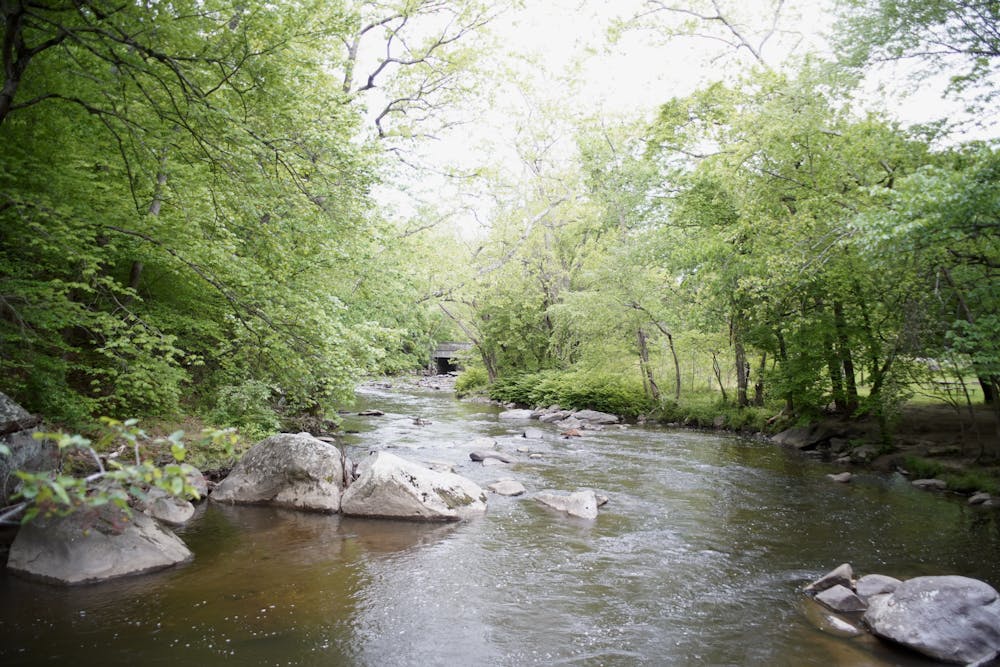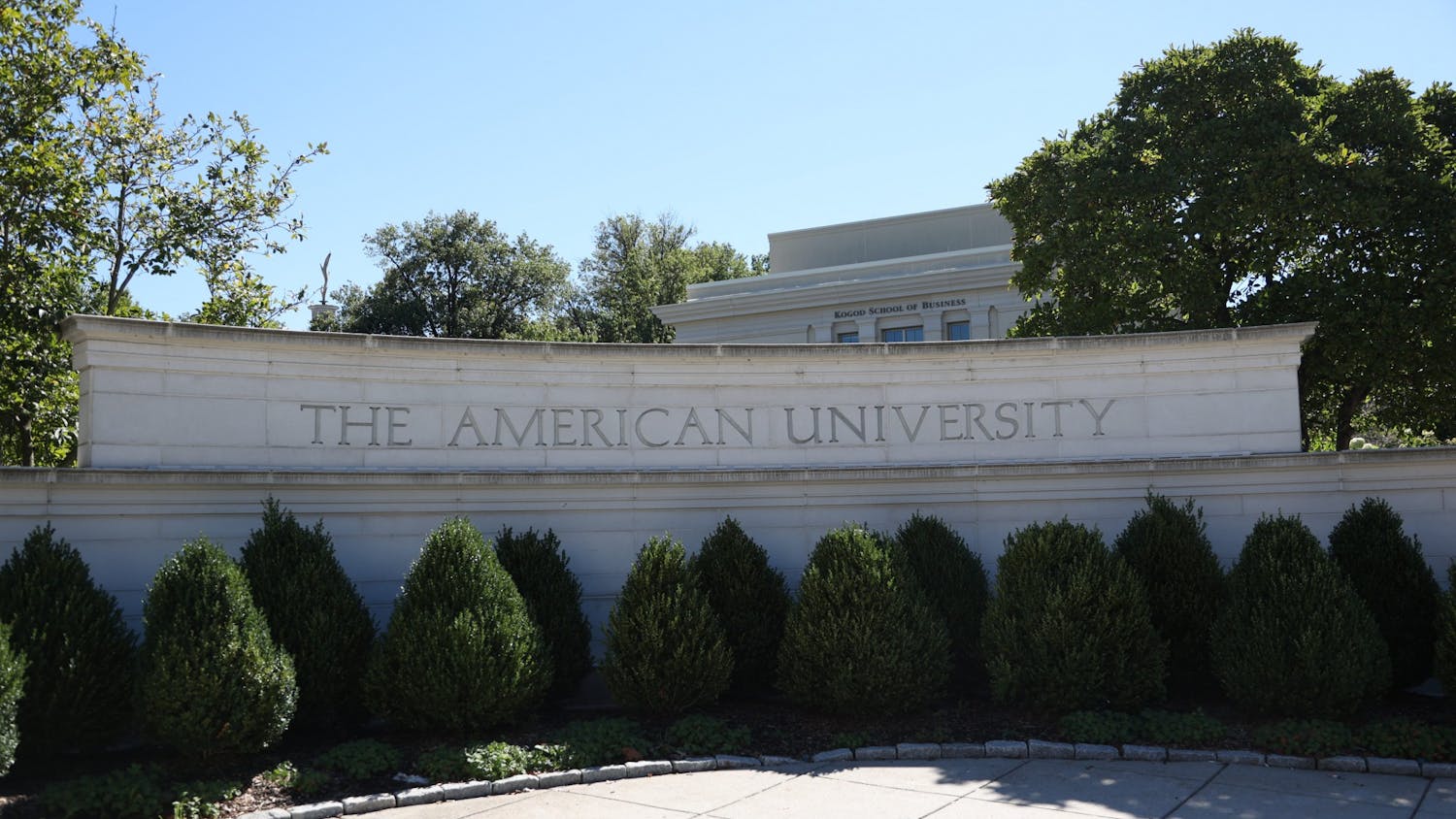When senators sought a new White House in 1866, they ended up commissioning Rock Creek Park instead.
At the time, senators wanted the president's home to be in a cleaner area than the Potomac River and tasked Maj. Nathaniel Michler of the Army Corps of Engineers to find a better location, according to The White House Historical Association.
They also wanted a park.
Michler found Rock Creek Valley and thought it would be the best place for the park, according to Joan Zenzen, a public historian who specializes in histories of national parks. Zenzen spoke about her book on Rock Creek Park’s administrative history, titled “An Urban Oasis: Rock Creek Park’s History and Management,” on Jan. 24 on Zoom as part of Rock Creek Park Conservatory’s Race, History and Rock Creek series.
“When he was looking, he realized, ‘Hey, this is a great place, maybe not for a White House, but for the public to recreate in and get in close touch with nature,’” Zenzen said at the virtual event.
At the event, Washingtonians learned about the origins of Rock Creek Park in addition to innovations and changes its leaders have made throughout the park’s 134-year history, as Zenzen also discussed in her book.
Zenzen detailed architects’ initial plans for the park, the role segregation played in the park’s development and how different organizations have supported the park over the years.
The plans
Zenzen started the event by describing Michler’s initial idea for Rock Creek Park. She said Michler envisioned a place for the public to relax surrounded by nature.
Fifty-two years later, in 1918, two planners published their plans for that nature space, with ideas for how the public might best utilize the park. Half-brothers Frederick Law Olmsted Jr. and John Charles Olmsted published a report, which Zenzen referred to as “The Olmsted Report,” that outlined various uses for different sections of the park, according to Zenzen’s book.
The green space near the intersection of Rock Creek and Military Road was described as the ideal spot for picnics or wading in pools, according to “An Urban Oasis.” Zenzen’s book also lists Frederick and John Olmsted’s separate sections for sports, concerts and hiking.
They envisioned a part of the park where people could see the wilderness in its natural state, and that area now contains Western Ridge Trail. The plan also used a clearing in the middle of the forest for any non-disruptive activity and a section where anyone could use the park regardless of the activity.
Those plans imagined Rock Creek Park as a welcoming place for all Washingtonians, Zenzen said during the virtual discussion.
“The Olmsted brothers were trying to imagine Rock Creek Park as a place where all different people could get the benefits of being in nature, being in an open space [and] having recreational opportunities of the whole range available to them,” Zenzen said.
The Olmsted Report’s organization of the park wasn’t used forever, though. The National Park Service has managed Rock Creek Park since the early 1930s, according to Zenzen’s book.
In that time, park staff have added a golf course, nature center and hiking trails to the park. Additionally, the clearing in the middle of the forest that was originally reserved for non-disruptive activity now holds the Rock Creek Golf Course, according to the book.
Rock Creek Park’s story also includes Civil War history. National Park administrators are in charge of eight Civil War sites and 10 forts and battle sites, according to The National Park Service. Only one of those locations, Fort DeRussy, is in the confines of the park.
Zenzen said she didn’t realize the importance of those Civil War sites until she started researching Rock Creek Park’s history. After she learned about the role the sites played in the Civil War, Zenzen found appreciation for them and Washington, D.C.’s role in the war.
“The Civil War defenses worked,” Zenzen said. “They repelled the Confederates and saved the nation’s capital from being taken.”
A history of segregation
Yet racism still penetrated the park long after the Civil War and into today, according to Zenzen. Throughout the time Jim Crow laws were in place, Black and white Americans swam in different pools in the park. The park service had been non-segregated since the 1930s, but D.C. kept its recreational resources segregated past the Brown v. Board of Education court case, according to the book.
“In practice, white and black residents largely used separate facilities,” Zenzen wrote in her administrative history.
Black residents still have inequitable access to the park, though. Entrances to the park from the East side of D.C. — where 92 percent of residents are Black, according to a 2016 D.C. Fiscal Policy institute report — are steep, hard to find and only accessible by car, according to the book.
Park administrators have changed the accessibility of the park in several ways throughout the years, Zenzen said. For example, park roads have widened to accommodate more people traveling to the park and to locations near the park.
In 1966, the park service opened a road tunnel to prevent the influx of commuters from making sharp turns on the park’s roads, according to the book.
In addition, Zenzen’s book also notes that Maryland’s population increase after World War II didn’t help the traffic problems. By 1952, Zenzen wrote, park planners were considering building a new highway through the Maryland portion of the park to improve the traffic conditions.
But then the Metro came to Washington.
The Metro saves the day
According to Zenzen’s history book, the Metro breaking ground on its city-wide mass transit system in 1969 ended plans for a highway cutting through parts of the park.
With the highway plans sleeping with the fishes, park staff gave the actual fish of Rock Creek Park a highway of their own decades later.
According to the book, the park system and other governmental organizations funded and periodically implemented solutions between 1989 and 2007 to allow fish to better swim to certain parts of the park’s river systems that were blocked.
Staff also removed barriers near the National Zoo in 1991, rerouted waterways below active sewer pipes and removed inactive sewer pipes near the Wilson Bridge starting in 2004, according to the book.
In 2007, they built fish ladders near Pierce Mill. The fish ladders allow fish to travel upstream via flowing water over a series of pools, each increasing in height over time, Zenzen said.
“It took a long, long time [with] a lot of studies and a lot of work to finally build these fish ladders,” Zenzen said. “[They] are like stone steps that have pools in each of them so that the fish literally jump a little bit each time to get over the larger barrier.”
Zenzen said fish traversing the park’s waters means a lot to people like Bill Yeaman, a resource management specialist for the park service. Zenzen learned about the history of the fish ladders from Yeaman when she was documenting the park’s history. Yeaman’s passion, Zenzen said, was clear.
“I love that connection when doing the interviews and I try to make that also come out in the book,” Zenzen said.
It’s not just individuals who have connected with the park, either. Organizations such as Rock Creek Conservancy and Friends of Pierce Mill have formed over the park’s 134-year history to maintain, advocate for and raise money for Rock Creek Park, according to the book.
The community surrounding the park stood out to Zenzen as she was learning the park’s history. On an individual level, Zenzen said, the people who visit and explore Rock Creek Park today are among the best parts of the park.
“It has this ready group of people who live right here who can use it and are using it on a regular basis,” Zenzen said.
This article was edited by Claire Sapilewski, Zoe Bell, Sara Winick and Abigail Pritchard. Copy editing done by Luna Jinks, Isabelle Kravis and Charlie Mennuti.





